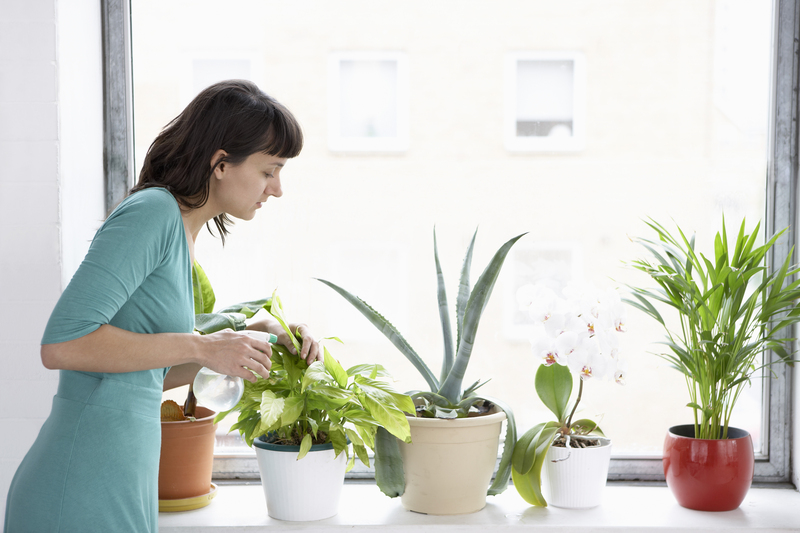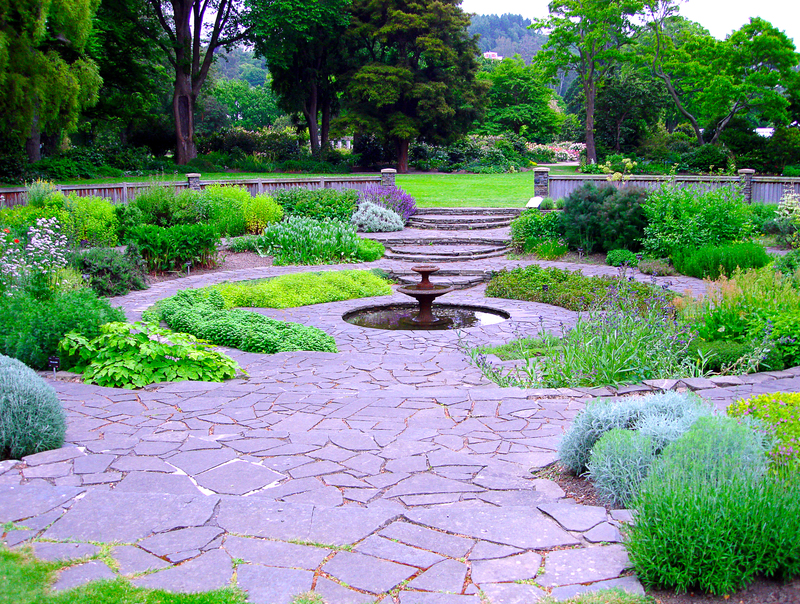Designing a Child-Centric Garden Full of Wonder
Posted on 22/08/2025
Designing a Child-Centric Garden Full of Wonder
Looking to create an outdoor haven that ignites young imaginations, fosters curiosity, and encourages playful exploration? Designing a child-centric garden offers a fantastic way to make nature irresistible to kids. With thoughtful layout, whimsical elements, and interactive features, your garden can become a dynamic space rich in learning, laughter, and lifelong memories.

Why Opt for a Child-Focused Garden?
Children thrive in spaces that encourage movement, sensory exploration, and creativity. Unlike standard gardens designed only for aesthetics, a garden for kids prioritizes fun, safety, and development. Such a garden inspires deeper connections to nature, helps build environmental stewardship, and supports physical, emotional, and cognitive growth.
- Promotes healthy outdoor activity
- Sparks creativity and problem-solving
- Enhances observation and sensory skills
- Fosters lifelong curiosity about the natural world
A child-centric landscape balances vibrant design, safety, and natural elements, making it a perfect backdrop for wonder and learning.
Key Principles for Designing a Child-Centric Garden
Before you dig up the lawn or plant the first seedling, consider these guiding principles. They lay the foundation for magical, captivating outdoor experiences.
1. Prioritize Safety
Safety is non-negotiable. Every element must be child-friendly--from non-toxic plants to secure borders and soft landings.
- Choose non-toxic, thornless, and allergen-free plants where possible
- Avoid ponds or water features unsupervised by adults, or use safety grilles
- Design gentle slopes and use cushioned or grassy surfaces beneath play structures
- Ensure good visibility and limit potential hiding spots
2. Promote Sensory Exploration
A wonder-filled children's garden should awaken all five senses. Mixing textures, colors, scents, and sounds invites exploration.
- Incorporate aromatic plants like lavender, mint, and lemon balm
- Add wind chimes, rustling grasses, and bird-attracting features
- Plant a tactile trail with fuzzy lamb's ear, smooth succulents, and rough tree bark
- Grow edible treats such as strawberries, peas, cherry tomatoes, and snapdragons for tasting
3. Encourage Imagination and Play
The best child-oriented gardens are full of whimsy, delight, and interactive features.
- Create hidden nooks or "secret dens" with willow tunnels, small teepees, or leafy hideaways
- Install stepping stones and log paths to inspire adventure
- Add moveable elements like loose rocks for building, sandpits, or fairy gardens
- Scatter magical art--painted rocks, mosaic insects, or bright flags--to weave a story throughout the space
4. Make It Accessible and Practical
- Design pathways wide enough for running, strollers, and wheelchairs if needed
- Install low beds and container gardens so little hands can plant and harvest with ease
- Label plants with fun facts or pictures for curiosity-led learning
- Include handy seating--benches, stumps, or picnic areas for shared moments
Creative Elements for a Garden Full of Wonder
Every garden for kids should brim with enchanting details. Mix and match these ideas as you shape an outdoor paradise that grows with your child.
1. Sensory Paths and Trails
Lay out stepping stones, wooden planks, or gravel to guide exploration. Sensory trails made of bark, pebbles, and grass engage touch and balance, while winding paths spark curiosity about "what's around the next corner."
2. Living Hideouts
Fabricate leafy shelters that become secret worlds--tiny willow tunnels, sunflower houses, snap pea teepees, or bamboo grottos. These living nooks are perfect for reading, hiding, or imagining grand adventures.
3. Wildflower Meadows & Butterfly Borders
Dedicate a sunny patch to wildflowers or pollinator-friendly plants like cosmos, marigolds, and zinnia. Butterflies and bees captivate children, opening a window to the life cycles of pollinators and the web of nature.
4. Edible Gardens
Raised beds, pots, or vertical walls can host cherry tomatoes, snap peas, nasturtium, and strawberries--let children pick snacks straight from nature. Gardening together teaches patience, responsibility, and respect for food origins.
5. Water and Mud Play
If safety allows, simple water features like shallow streams, hand pumps, or splash pads delight the senses and unleash creative play. Mud kitchens let little chefs concoct "soups" from earth and petals, teaching science through play.
6. Wildlife Habitats
Incorporate birdhouses, bug hotels, and shallow wildlife ponds (covered for safety) to support local fauna. Observing birds, insects, and amphibians nurtures empathy and fascination with the wild world.
7. Musical Corners
Install outdoor xylophones, chimes, or "sound walls" with pots and pans. Let children experiment, compose, and enjoy music surrounded by greenery.
8. Art Stations & Nature Crafts
A table for clay modeling, painting, or pebble mosaics invites creativity. Provide baskets for collecting acorns, leaves, and flowers for crafts--transforming every walk into a treasure hunt.
Best Plants for a Child-Optimized Garden
Selecting plants for a kid-focused garden requires balancing beauty, durability, safety, and sensory appeal. Here are ideal choices:
- Lamb's ear--soft and touchable
- Sunflowers--tall, bold, and easy for little gardeners
- Snapdragons & Nasturtiums--edible and colorful
- Lavender & Mint--for scent and pollinators
- Strawberries & Cherry tomatoes--for snacking and harvesting
- Sedum, Hens & Chicks--tough succulents that won't mind rough play
- Grasses like blue fescue or carex--great for texture and movement
Ensure all chosen plants are non-toxic and age-appropriate. Check local guidelines for plants to avoid due to toxicity or allergy risks.
Easy DIY Projects for Your Kid-Friendly Outdoor Haven
A garden designed for children becomes even more special with hands-on homemade features. Here are simple ideas:
- Fairy doors on tree trunks to invite magical thinking
- Painted stepping stones with handprints or fun designs
- Teepee frames from bamboo or willow--even let kids help grow climbers over them
- Homemade birdfeeders or bug hotels reused with natural materials
- Personalized plant markers made from painted rocks or sticks
Projects like these boost ownership, creativity, and excitement about spending time in the garden.
Engaging Children in the Gardening Process
A truly child-centric garden isn't just made for kids--it's made with them. Involve children at every stage.
- Let them sketch a map of their dream garden
- Take them plant-shopping to select seeds and flowers
- Assign age-appropriate tasks: digging, watering, harvesting, or sweeping
- Celebrate milestones--the first flower, a new visitor, the harvest
Children who help design and care for their garden develop a deeper sense of pride and connection.
Tips for Maintaining a Child-Centric Garden
- Opt for easy-care plants and mulch areas for less weeding
- Keep paths clear and play areas tidy to prevent trips
- Check equipment and play structures regularly for safety
- Update the spaces as children age--what delights a toddler may not engage an older child
- Rotate toys, crafts, and interactive elements to rekindle interest over time
Encouraging Wonder Year-Round
While the garden will change with the seasons, moments of wonder are always possible. In winter, hang bird feeders, decorate with natural ornaments, or plan spring plantings. Rainy days can bring puddle play or nature-themed crafts indoors. Make nature observation journals a part of everyday learning.

Inspiring Outdoor Play: Benefits of a Children's Wonder Garden
A child-centric garden of wonder is an investment in joy, well-being, and lifelong learning. Playing in a kid-designed garden builds resilience, creativity, and social skills. It connects children with the rhythms of life, from the patience of planting to the magic of new growth.
- Physical benefits: running, balancing, and digging develop strength and coordination
- Mental health: time in nature reduces stress and fosters calm
- Cognitive growth: hands-on experiences grow scientific thinking, observation, and problem-solving
- Social skills: sharing, cooperation, and communication flourish in group play
- Environmental stewardship: kids learn to notice, care for, and value the natural world
Conclusion: Cultivating a Garden Full of Wonder
Designing a child-centric garden brimming with wonder is more than a landscaping project--it's a gift of inspiration and discovery. Every garden will be unique to your family's needs and your children's imaginations. By putting kids at the heart of your outdoor space, you encourage adventures today and nurture a deep connection to nature that will last a lifetime.
Start small, involve your little gardeners, and let curiosity lead the way. With creativity and care, your wonder-filled children's garden will flourish into a magical retreat--one bright with laughter, learning, and endless possibility.

